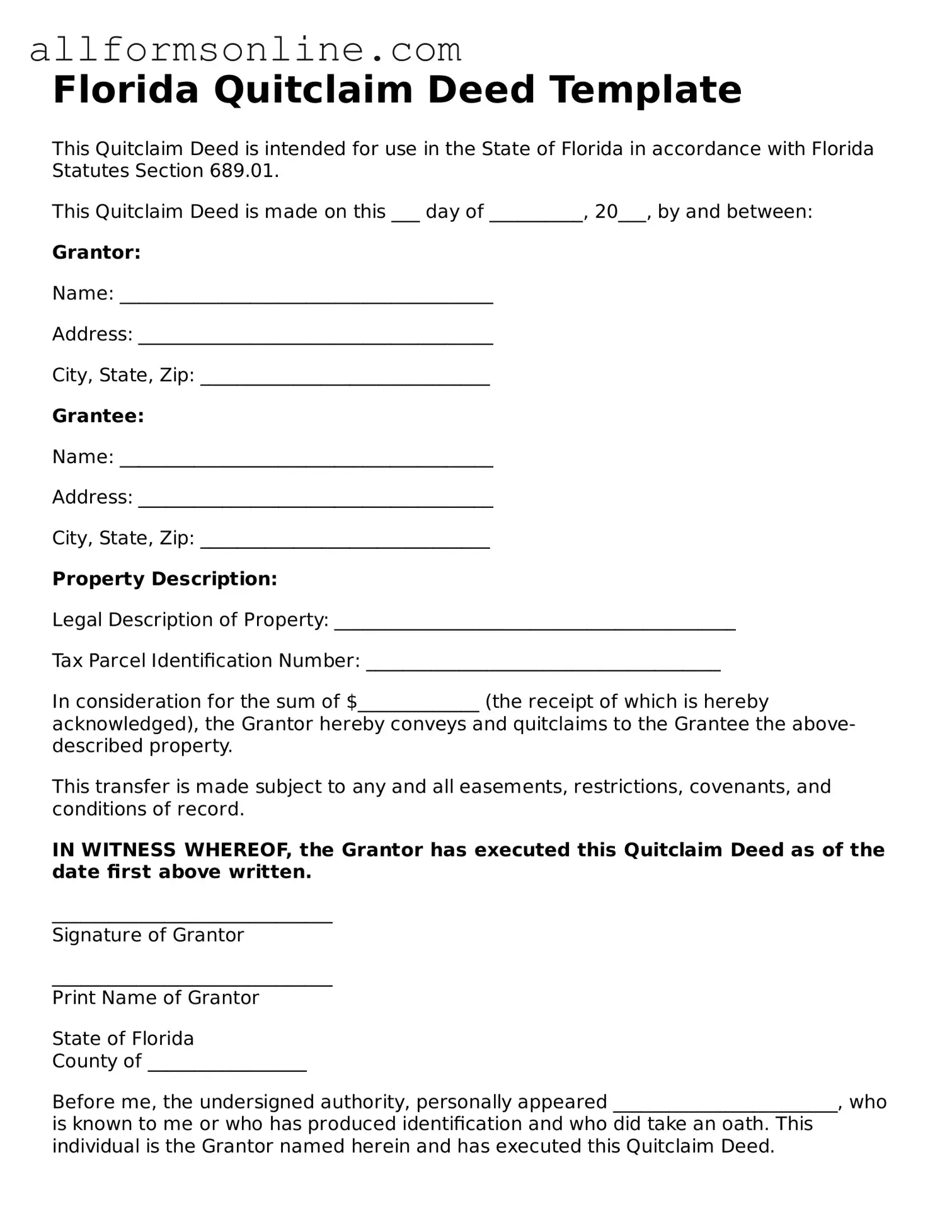What is a Florida Quitclaim Deed?
A Florida Quitclaim Deed is a legal document used to transfer ownership of real estate from one party to another. It conveys whatever interest the grantor has in the property, without guaranteeing that the title is clear or free of claims. This type of deed is often used between family members or in situations where the parties know each other well.
When should I use a Quitclaim Deed?
You might consider using a Quitclaim Deed when transferring property to a family member, adding or removing someone from the title, or during a divorce settlement. It is important to note that this deed does not provide any warranties, so it’s best used in situations where the parties are familiar with the property’s history.
How do I complete a Quitclaim Deed in Florida?
To complete a Quitclaim Deed in Florida, you will need to provide the names of the grantor (the person transferring the property) and the grantee (the person receiving the property). You must also include a legal description of the property and the date of the transfer. Both parties should sign the document in front of a notary public, and then it should be filed with the county clerk’s office.
Is a Quitclaim Deed the same as a Warranty Deed?
No, a Quitclaim Deed is not the same as a Warranty Deed. A Warranty Deed provides guarantees about the title, ensuring that the grantor has a clear title to the property and the right to sell it. In contrast, a Quitclaim Deed transfers whatever interest the grantor has, without any guarantees or warranties regarding the title.
Are there any fees associated with filing a Quitclaim Deed in Florida?
Yes, there are typically fees associated with filing a Quitclaim Deed in Florida. These fees can vary by county, but you should expect to pay a recording fee when you submit the deed to the county clerk’s office. Additionally, if the property is being transferred for value, documentary stamp taxes may apply.
Do I need an attorney to prepare a Quitclaim Deed?
What happens after I file a Quitclaim Deed?
After you file a Quitclaim Deed, the county clerk will record it in the public records. This officially documents the transfer of ownership. It is important for the grantee to keep a copy of the recorded deed for their records. The new owner may also want to update any property tax records or insurance policies to reflect the change in ownership.
